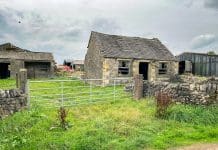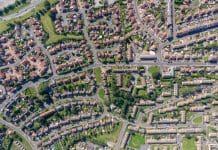Tackling and controlling the spread of Japanese knotweed is a problematic issue that cannot be ignored. Here, The Property Care Association Invasive Weed Group have provided essential guidance and advice for developers…
Japanese knotweed was introduced from Japan in 1825 as an ornamental plant. The plant is not unattractive but its rapid annual growth and relentless spread allows it to easily overwhelm other garden plants, and more seriously, has the capacity to cause structural damage.
It is extremely difficult to eradicate after any construction work is complete, so future property owners must not be burdened with this invasive species. It is essential that when developing land impacted by Japanese knotweed, developers are aware of the risks posed to avoid the pitfalls of costly remediation, litigation and resale issues.
Key considerations – where Japanese knotweed is identified
- If Japanese knotweed is on or within 7 metres of any proposed site you should seek specialist advice;
- Once identified, fence-off the knotweed and use signage to warn other site users of the issues with knotweed;
- Do not excavate or use machinery/vehicles on or near to impacted land;
- Do not cut with flails or strimmers. Pull up knotweed or put knotweed material in refuse bins;
- Do not allow any knotweed material to enter water courses;
- Good site hygiene helps avoid the unnecessary spread of Japanese knotweed;
- Swift action offers a greater range of cost-effective remediation options.
Why should you take Japanese knotweed seriously?
The cost of remediation should never be underestimated, particularly if impacted land is to be excavated and infested soil removed from site. Knotweed growth can be described like ‘an iceberg’ – the growth below ground rhizomes (roots) which do the damage, often extend more than 2 metres downwards from any visible surface plant growth. This requires large volumes of sub-soil being taken off-site to a registered landfill site licenced to take the waste, which creates extra financial implications for any construction site.
Where Japanese knotweed is growing within, or next to a property being part of a residential development, mortgage lenders demand that a management plan and guaranteed treatment program is implemented. To mitigate against the impact of Japanese knotweed, bringing in the expertise of an invasive weed specialist, as recommended in the Environment Agency Code of Practice, is essential.
The Property Care Association (PCA) Invasive Weed Group is the only truly independent trade body recognised by the Environment Agency (EA) and Royal Institution of Chartered Surveyors where member companies are vetted and assessed.
Selecting an Accredited Invasive Weed Specialist
PCA accredited specialists aim to provide impartial advice evaluated to meet project requirements. Note: Clients are advised to obtain more than one estimate or quotation for the purpose of comparison, but should remember that price is only one factor in selecting a service provider.
All PCA Invasive Weed Control Group members have signed up to a code of ethics and have been independently assessed as being able to conduct and document thorough site assessments, undertaking work compliant with the EA and PCA Code of Practice. Uniquely, members also have the ability to offer independent, insurance backed guarantees.
Knotweed treatment programmes should include management plans to demonstrate that a client’s future land use objectives can be met (the PCA Code of Practice acknowledges that herbicide treatment alone is not normally enough to allow development to progress on previously impacted land).
The expertise and credibility of a PCA member enables them to complete contracted excavations or provide experienced technicians to oversee excavation works. The objective of knotweed excavation is to ensure that the optimum volume of land is excavated. Excavating too much is inefficient and costly, while too little will not lead to Knotweed remediation.
Estimates or quotations will normally be provided free of charge when quoting against a specification. However, a fee may be charged if advisory work is involved. Clients are advised to confirm their instructions with the contractor from the outset.
For specific information relating to Japanese knotweed, its identification and the legal issues associated with this invasive weed see EA ( https://www.gov.uk/japanese-knotweed-giant-hogweed- and-other-invasive-plants ) and PCA Codes of Practice (CoP). ( http://www.property-care.org/Homeowners. Invasive_Weed_Control.asp ) ■
5 steps to deal with Japanese knotweed where development is proposed:
1. Access for plant and logistics for the removal of knotweed need to be assessed;
2. Excavation of knotweed impacted land should favour on-site solutions such as relocation and/or burial; these must comply with the EA CoP. Removal off-site needs to comply with Waste Management Regulations;
3. Agree a Knotweed Management Plan as recommended by the EA. An outline plan may form the basis of an estimate or quote but should ultimately evaluate methods of remediation against site objectives;
4. Implement the Knotweed Management Plan, treating or removing knotweed-impacted land as appropriate. Ensure that the chosen specialist has suitably qualified staff, that the specialist company is financially able to carry out the work and can offer suitable independent Insurance Backed Guarantees – IBG’s;
5. Ensure that all remediation work is fully documented and recorded in order to meet all legal obligations. A PCA accredited specialist will keep their own records and will have procedures in place to make such information available to their clients.
. . . . . . . . . . . . . . . . . . . . . . . . . . . . . . . . . . . . . . . . . . . . . . .
The Property Care Association
Tel: 0844 375 4301













